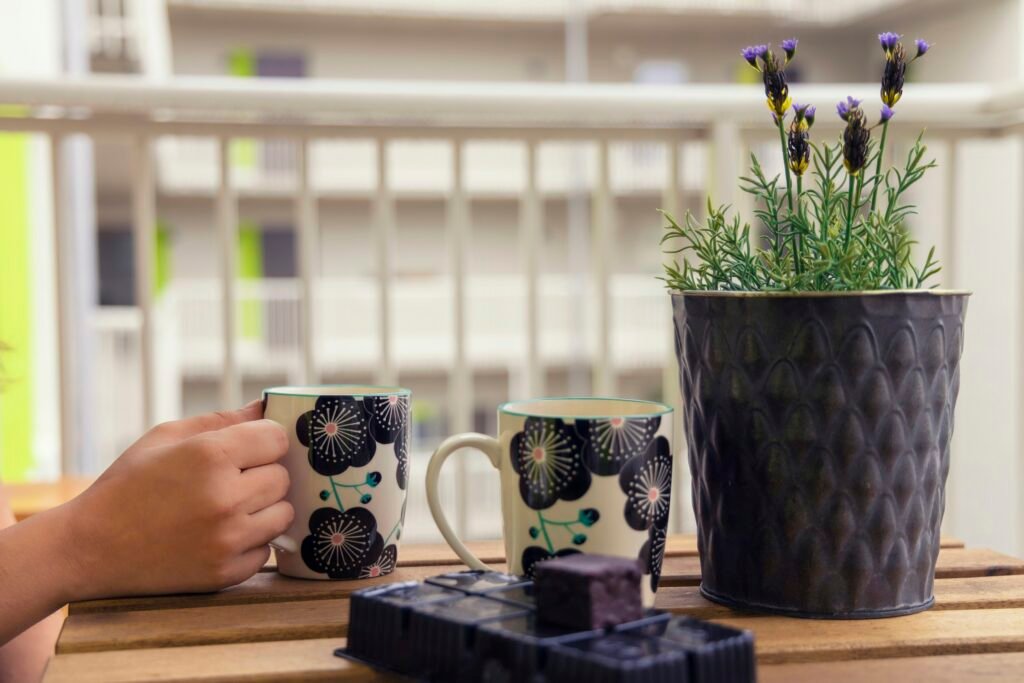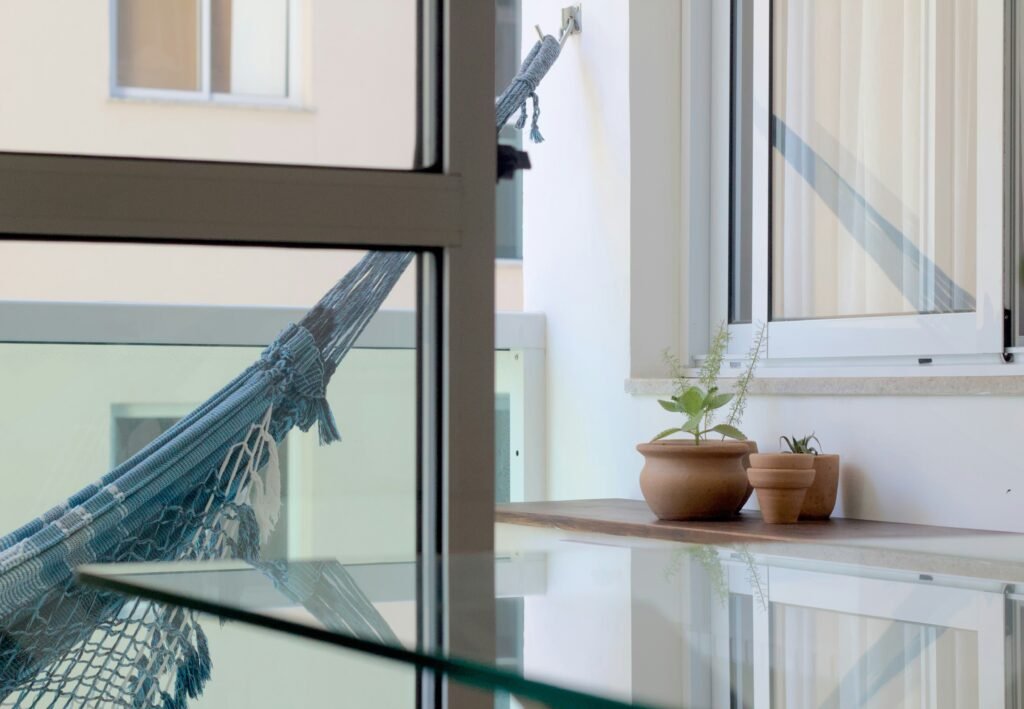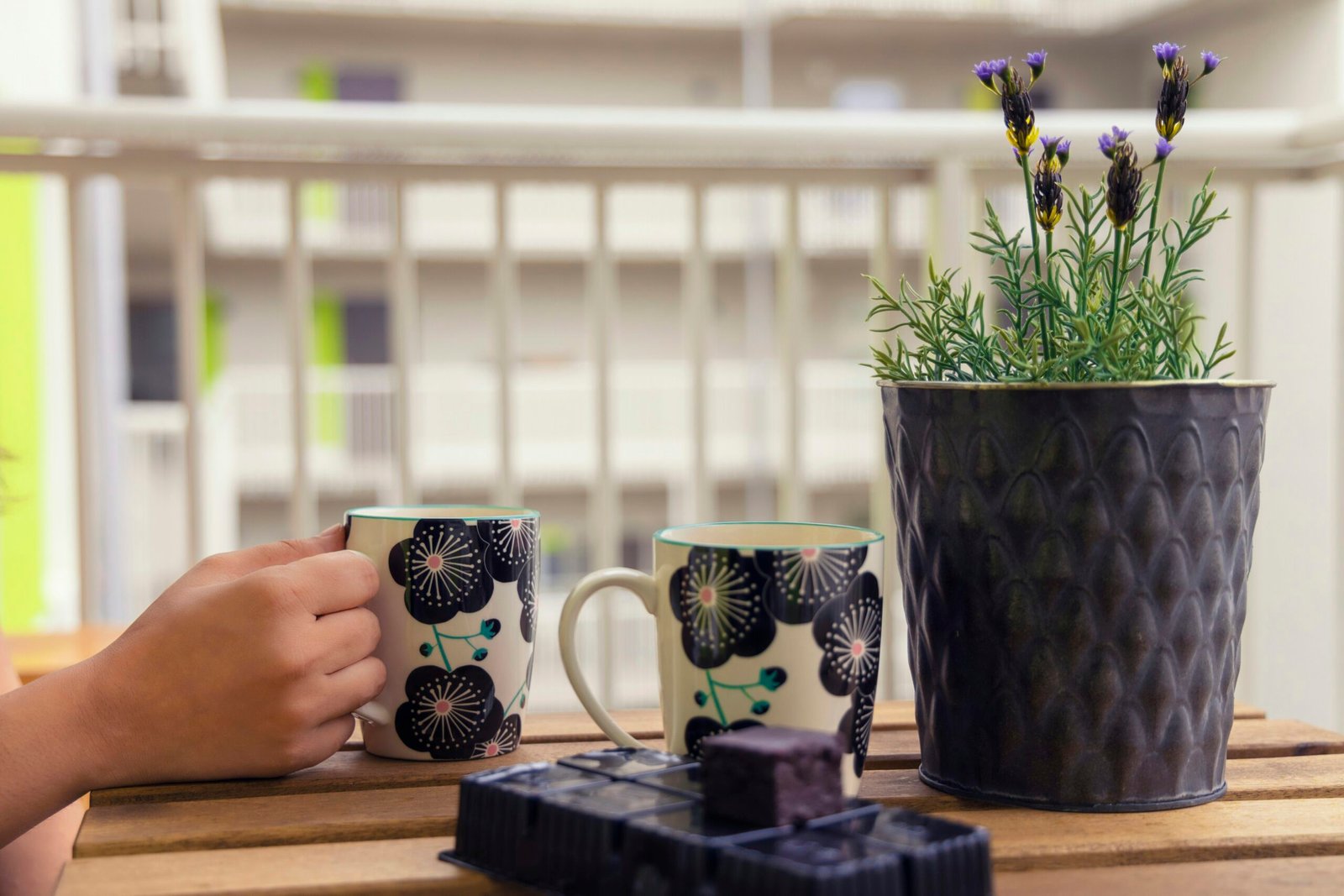?Want to transform your small balcony or patio into a cozy, useful retreat you’ll actually use every day?
How Do I Decorate A Small Balcony Or Patio Space?
You’re asking a great question because small outdoor spaces can feel limiting at first, but they offer huge potential. With the right plan, furniture, plants, and accessories, you can turn that compact area into a comfortable and beautiful extension of your living space.
Start with a Plan
Before you buy anything, take a little time to plan so you don’t end up with oversized pieces or a cluttered layout. A thoughtful plan will help you match furniture, plants, and lighting to the size and function you want.
Assess the space
Measure width, depth, and any fixed elements like railings, doors, or awnings so you know the exact constraints you’re working with. Also note where sunlight falls, how windy it gets, and whether you have exposure to neighbors’ windows for privacy planning.
Define how you’ll use it
Decide whether you want a breakfast nook, a reading spot, a mini garden, or a multipurpose area for work and relaxation. Knowing the primary use will guide furniture size, layout, and storage choices.
Consider local climate and building rules
Check building regulations, homeowner association rules, and weight limits so you don’t install something that violates rules or risks structural issues. Your climate will shape material choices for furniture and plants, so factor in sun, wind, rain, and snow exposure.
Measure and Map
Accurate measurements are your best friend for small spaces, so you don’t buy pieces that won’t fit. Create a simple map or sketch to test layouts before purchasing or assembling furniture.
Take accurate measurements
Measure from wall to railing and note door swing and step locations, plus the height of railing for safety considerations. Record measurements on your sketch so you can compare them to product dimensions as you shop.
Create a scaled sketch
Make a scaled drawing on graph paper or use a free app that lets you drag furniture shapes into a layout to visualize spacing. This helps you see if a small bistro set or a narrow bench will fit comfortably without blocking the door.

Choose a Style and Color Palette
Picking a style and a compact color palette will make the area feel cohesive rather than chaotic. Limiting your palette to two or three main tones creates visual calm and makes the space feel larger.
Match building exterior vs your interior
Decide whether you want your balcony to echo interior colors for flow or contrast with a fresh palette that makes the area feel like a separate room. Either approach works—just keep the scale and materials in mind so it doesn’t clash with the building exterior.
Choose a flexible color palette
Neutral bases (beige, gray, warm wood, or black) with one or two accent colors work well on small spaces. Use accents with cushions, rugs, and plants so you can easily change the mood seasonally without redoing structural elements.
Flooring Options for Small Outdoor Spaces
Flooring sets the tone for the whole space and can instantly upgrade a concrete or dull surface. Choose materials that are weather-resistant and easy to install or remove.
Outdoor rugs vs floor tiles vs decking tiles
Outdoor rugs soften the space, add color, and are easy to roll up for storage. Interlocking decking tiles provide a wood or composite look with simple installation, while porcelain or stone tiles offer a more permanent, upscale feel if your rules allow.
Care and maintenance
Consider how easy the surface is to clean and whether it needs sealing or seasonal storage. Rugs and tiles with quick-drain systems are useful in rainy climates; avoid materials prone to mold if your balcony lacks sun.
Table: Flooring Comparison at a Glance
| Flooring Type | Pros | Cons | Best For |
|---|---|---|---|
| Outdoor rug | Soft, colorful, inexpensive, easy to change | Fades or molds if poor drainage | Temporary styling, renters |
| Interlocking decking tiles | Quick install, good grip, warm look | May need lifting for cleaning | DIY upgrades, moderate budget |
| Porcelain/stone tiles | Durable, upscale, weather-resistant | Heavy, often permanent | Long-term improvement, larger budget |
| Composite decking | Low maintenance, rot-resistant | More expensive | Long-term, low upkeep |
Furniture for Small Balconies and Patios
Furniture needs to be appropriately scaled and possibly multifunctional to maximize utility. Choose pieces that can fold, stack, or store so you retain flexibility.
Folding and stackable furniture
Folding chairs and tables let you clear floor space when needed, and stackable stools are handy for extra guests. Look for compact depth and slim profiles so they tuck away neatly.
Built-in benches with storage
A built-in bench along a wall or railing can provide seating and hidden storage for cushions and tools, saving valuable floor footprint. You can DIY a simple bench with waterproof storage boxes beneath or purchase pre-built units that fit your size.
Multi-functional pieces
Ottomans that double as storage, side tables that expand into dining surfaces, and benches that convert into planters give you more function with less bulk. Select pieces based on primary use—if you plan to dine outdoors, prioritize a small table that can expand.
Table: Furniture Types and Best Uses
| Piece | Benefits | Considerations | Ideal For |
|---|---|---|---|
| Foldable bistro set | Compact, inexpensive | Less durable if cheap | Casual dining |
| Narrow balcony bench | Space-saving, storage potential | Fixed length | Lounging and storage |
| Stackable stools | Portable, multi-seat options | Less comfortable for long sits | Entertaining |
| Drop-leaf table | Expands when needed | Requires wall or rail support | Meals in tight spaces |

Make Use of Vertical Space
If floor space is limited, your walls and railing are the next best areas to use. Vertical design keeps the floor open while adding greenery and storage.
Wall planters and rail planters
Rail planters clip on and free up floor area while adding greenery at eye level. Wall-mounted planters can be arranged like artwork to create a living wall effect even on narrow balconies.
Shelving and hanging storage
Install narrow shelves for decor, small pots, or drinks, and use hanging baskets to stash items off the floor. Shelving can also act as a barrier to block views from neighbors while giving you display space.
Trellises and green walls
A vertical trellis supports climbing plants that create privacy and reduce wind, and modular green wall systems can hold many small pots in a compact area. Choose hardy climbers or succulents suited to your sun/shade conditions.
Plants: Choosing the Right Greenery
Plants soften hard surfaces, add color and scent, and can improve privacy and microclimate. Select plants that match sunlight, wind exposure, and the depth of containers you can use.
Low-maintenance plants for small spaces
Succulents, snake plants, and pothos are forgiving and require minimal care, making them excellent choices if you’re often busy or new to plant care. Many container-friendly shrubs and perennial herbs also thrive without constant attention.
Table: Plant Suggestions for Small Balconies
| Plant | Light Needs | Water Needs | Pot Depth |
|---|---|---|---|
| Snake plant (Sansevieria) | Low to bright indirect | Low | 6–8 in |
| Succulents | Bright direct to indirect | Very low | 4–6 in |
| Lavender | Full sun | Low | 8–12 in |
| Pothos | Low to bright indirect | Moderate | 6–8 in |
| Dwarf citrus | Full sun | Moderate | 12–18 in |
| Herbs (basil, mint) | 4–6 hrs sun | Moderate | 6–10 in |
Herbs and edibles
Herbs like basil, rosemary, and thyme fit well in small pots and provide fresh flavors for cooking. If you have enough sun, compact tomato varieties and dwarf peppers can also produce surprising yields.
Container and root depth considerations
Match pot size to root depth: herbs and succulents can live happily in shallow pots, while shrubs and small trees need deeper containers and more soil volume. Also factor in drainage: always use pots with holes and a layer of gravel or pot feet if necessary.
Create Privacy and Wind Protection
Privacy and wind control make your balcony more comfortable and usable, especially if you’re surrounded by neighbors. You can combine plants and screens for a solution that looks good and functions well.
Screens, bamboo, outdoor curtains
Bamboo screens and outdoor fabric curtains soften views and reduce exposure to the wind while adding texture. Curtains can be tied back when you want open views and closed when you need privacy.
Plants for privacy
Tall planters with bamboo, ornamental grasses, or evergreen shrubs form living screens that change with the seasons and add greenery. Use staggered heights and planters on stands to keep wind from funnelling across the balcony.

Lighting to Extend Usable Hours
Lighting determines how you’ll use the space at night; soft, layered lighting creates atmosphere without harsh glare. Pick lighting solutions based on wiring access, safety, and the mood you want to create.
Task lighting, ambient, and accent
Task lighting is essential near a table or for reading, ambient lighting sets the overall mood, and accent lighting highlights plants or design features. Combine string lights, a table lamp, and a few spotlights for balance.
Solar and battery-powered options
Solar lights offer cord-free convenience and are ideal if you don’t want to run electricity outdoors, while rechargeable battery-powered LEDs provide brighter, reliable illumination. If you have outlet access, low-voltage wired systems offer the most consistent brightness.
Table: Lighting Options and Uses
| Type | Pros | Cons | Best Use |
|---|---|---|---|
| String lights | Warm ambiance, flexible | Can tangle, needs anchor points | Ambient mood |
| Solar stake lights | No wiring, eco-friendly | Dependent on sun | Accent paths/plants |
| Battery LED lanterns | Portable, bright | Batteries need recharging | Task lighting |
| Wall-mounted sconce | Permanent, stylish | Requires wiring | Main lighting near door |
Textiles, Cushions, and Accessories
Textiles add comfort, color, and softness to a small balcony or patio, making it feel like an extension of your living room. Choose weatherproof materials to avoid mildew and fade.
Weatherproof textiles and cushions
Look for outdoor-rated fabrics that repel water, resist UV fading, and are easy to wash. Keep spare cushion covers or quick-dry inserts if you don’t have covered storage.
Use of mirrors and art to enlarge space
A mirror angled to reflect the sky or your interior can make a narrow balcony feel deeper, and lightweight outdoor art adds personality without eating up floor space. Ensure all wall decor is securely mounted to handle wind.
Smart Storage Solutions
Storage keeps the space tidy and usable without crowding. Use hidden storage, vertical racks, and clever containers to maintain a clean look.
Hidden storage benches and ottomans
Storage benches serve dual roles as seating and places to tuck pillows, gardening tools, or blankets out of sight. Choose vents or breathable boxes to prevent mold when storing damp items.
Vertical hooks and rail systems
Hooks and rail systems store tools, cups, and planters vertically so floors stay clear. Slim cabinets or wall-mounted organizers can hold small items like seed packets or hand tools.
Create Zones on Very Small Balconies
Even the smallest balcony can have distinct areas for sitting, dining, and plants—just keep them compact and organized. Zoning helps you use the space more intentionally.
Seating and dining zones
A narrow bistro table or wall-mounted drop-leaf table can provide a dining spot without dominating the entire area. Position seating along a railing or against the wall to maintain a clear circulation path.
Reading nook or plant sanctuary
Allocate a corner for a comfy chair and side table for reading, or cluster plants and a small stool so you have a calming green corner. Use a portable tray table so the same seat can serve multiple functions.
Seasonal Styling and Year-Round Use
Design for flexibility so your balcony serves you across seasons, whether you live in a temperate or seasonal climate. Small changes—like swapping cushions or plants—can adapt the mood quickly.
Summer and warm weather tips
Use light-colored textiles and breathable seating to stay cool, and add potted shade plants or a compact umbrella for sun protection. Lightweight furniture that’s easy to move can be repositioned to catch breeze or shade.
Winter and cold weather tips
Store cushions indoors or in waterproof boxes to prevent mold, and introduce cozy throws for chilly evenings. Consider a small patio heater or windbreaks and use hardy evergreens to add life in cold months.
Safety, Building Rules, and Weight Limits
Your balcony’s structural safety is essential; check weight limits and local codes before adding heavy planters or furniture. Adhering to rules also prevents conflicts with building management or neighbors.
Check regulations and permissions
Some buildings restrict visible items or planting that could affect facade or fire safety, so check with your building manager before major changes. Also confirm whether you need permission for drilling, permanent fixtures, or wiring.
Avoid overload and choose lightweight materials
Avoid oversized planters filled to the brim with heavy soil; use lightweight mixes and smaller containers to reduce load. Choose aluminum or resin furniture instead of heavy wrought iron if you’re near weight limits.
Budgeting and DIY vs Buy
You can create a beautiful small balcony on any budget if you prioritize the items that matter most to you. Invest where durability and comfort matter, and DIY or thrift the rest.
Thrifting and DIY projects
Repurpose pallets, upcycle secondhand chairs with outdoor paint, or build simple planter boxes to save money and add character. Thrift stores and community marketplaces often have compact furniture you can restore.
When to invest in key pieces
Invest in a weatherproof seating piece or a good-quality table you’ll use often, because durable items last and save money over time. For decorative or seasonal items, choose cheaper alternatives that you can replace.
Mistakes to Avoid
Avoid overloading the floor with too many items or choosing furniture that blocks access to doors and pathways. A few well-chosen elements work better than many mismatched pieces.
Overcrowding and ignoring maintenance
Too many pots or bulky furniture makes the space feel smaller and harder to maintain, and neglected plants or cushions can quickly become eyesores. Keep a simple maintenance routine to ensure the area stays inviting.
Poor drainage and inappropriate materials
Using non-draining pots or fabrics that hold moisture leads to mold and faster deterioration; always choose outdoor-rated materials and provide drainage. Avoid heavy decorative features if your balcony has a strict weight limit.
Quick Checklist
A checklist helps you complete the project without forgetting important steps and ensures each choice supports your plan for function and style. Use this checklist before finalizing purchases and installations.
Table: Quick Balcony Decorating Checklist
| Task | Yes/No | Notes |
|---|---|---|
| Measured width, depth, and door swing | ||
| Checked building rules and weight limits | ||
| Chosen primary use (dining, lounging, gardening) | ||
| Picked a compact color palette | ||
| Selected weatherproof furniture | ||
| Added vertical storage/planters | ||
| Installed lighting plan | ||
| Chosen low-maintenance plants | ||
| Created privacy plan | ||
| Planned maintenance/storage for off-season |
Final Styling Tips and Inspiration
Small touches can elevate a compact outdoor space: a single striking planter, a patterned rug, or a cluster of cushions creates personality without clutter. Keep your styling consistent with the color palette and the primary function so the space feels intentional and calm.
Conclusion
You can make a small balcony or patio feel roomy, comfortable, and purposeful with careful planning, appropriately scaled furniture, vertical storage, and a thoughtful plant selection. Take one step at a time—measure, plan, choose multifunctional pieces, and test what works so your small outdoor space becomes an everyday refuge you’re proud of.
